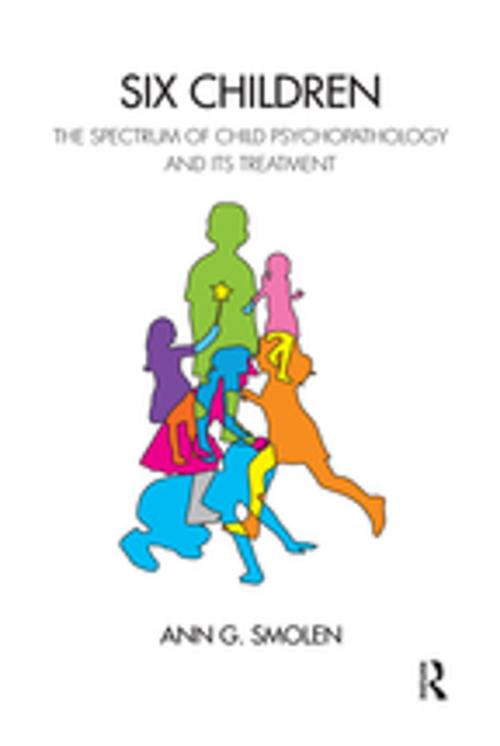Six Children
The Spectrum of Child Psychopathology and its Treatment
Nonfiction, Health & Well Being, Psychology, Mental Health| Author: | Ann G. Smolen | ISBN: | 9780429919275 |
| Publisher: | Taylor and Francis | Publication: | March 29, 2018 |
| Imprint: | Routledge | Language: | English |
| Author: | Ann G. Smolen |
| ISBN: | 9780429919275 |
| Publisher: | Taylor and Francis |
| Publication: | March 29, 2018 |
| Imprint: | Routledge |
| Language: | English |
Theoretically anchored and historically informed, Six Children is a book about the nuances of child psychoanalysis as these unfold in the encounter with different forms of early life anguish. Addressing autistic, homeless, and despondent children on the one hand, and greedy, betrayed, and angry children on the other, the book attempts to integrate developmental deficits, intrapsychic conflicts, and constitutional givens in evolving a deeper understanding of both severe and milder psychopathology. Ample clinical illustrations are provided and technical interventions pertinent to each of these situations are carefully fleshed out. Equal attention is given to holding and interpretation, family intervention and individual focus, and affect management and mentalization. The fact that the six main chapters of the book are sandwiched between a careful review and update of the field of child analysis makes the book especially suited for being used as a teaching tool in didactic curricula. A comprehensive and carefully selected bibliography imparts the book a scholarly quality, which exists alongside the text's literary and humane cadence.
Theoretically anchored and historically informed, Six Children is a book about the nuances of child psychoanalysis as these unfold in the encounter with different forms of early life anguish. Addressing autistic, homeless, and despondent children on the one hand, and greedy, betrayed, and angry children on the other, the book attempts to integrate developmental deficits, intrapsychic conflicts, and constitutional givens in evolving a deeper understanding of both severe and milder psychopathology. Ample clinical illustrations are provided and technical interventions pertinent to each of these situations are carefully fleshed out. Equal attention is given to holding and interpretation, family intervention and individual focus, and affect management and mentalization. The fact that the six main chapters of the book are sandwiched between a careful review and update of the field of child analysis makes the book especially suited for being used as a teaching tool in didactic curricula. A comprehensive and carefully selected bibliography imparts the book a scholarly quality, which exists alongside the text's literary and humane cadence.















